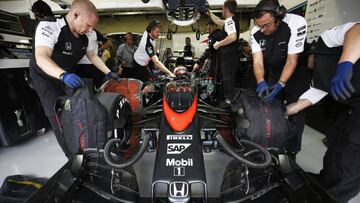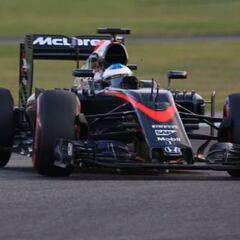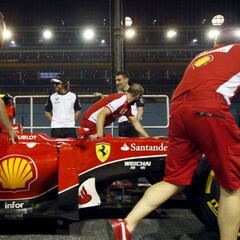McLaren may go into the first test with their old motor
The car will be on the grid on Monday, but the reliability of the engine and the aerodynamics are not what was expected, Woking is staying silent.

Sunday is revelation day for McLaren and Monday for Formula 1 as the first day of testing in Montmeló beginsfor the 2016 season. The track will be packed with the roar of expectation: tweaked motors, adrenaline flowing like fuel pipes, hopeful drivers revving up, and technicians closely examining indecipherable streams of data like a motorsport version of the Matrix.
McLaren will unveil their new machine online on Sunday, showing off the new design with new colours, but the rumour is circulating that, five days from taking to the track, the old motor may be the one the team sends out for the initial tests.
The noises coming out of McLaren are not too convincing on the brink of testing; first the Woking-based squad was one of the last to pass the mandatory FIA crash tests, having only confirmed doing so last Tuesday, and now rumours are circulating that design flaws have cast doubts over the reliability of their compact engine. It is an engine that which stays true to the McLaren design philosophy to keep everything as small as possible in favour of better aerodynamics. This has led to compromises in the engine design.
A cautious silence is being guarded in Woking. “We are out to meet everyone’s expectations and get to the podium as soon as possible. We will resolve all the technical problems that we didn’t manage to master in 2015 and go into the first race with confidence”, said Honda chief Yasuhisa Arai recently in Nikkei, but has since backtracked: "I can't say we've solved them definitively".
It seems their latest tests haven't return the desired results either, and optimism is on the wane. The consistency of the motor loaded with the bigger turbo in the 'size zero' engine design has been called into question, but at least "the aerodynamic data is better than we predicted".
Motorsport.com revealed that word is going 'round about complications with the turbo, creating doubts about the power train for the test in Spain.
Honda's problem is trying to stay true to their thinking while increasing the power to compete with the other more powerful machines on the grid. Honda's turbo and MGU-H (the second electric motor) are built as one unit, saving on space, and housed together with the compressor, which feeds air into the turbo, within the vee of the engine cylinders.
The greater aerodynamcis are offset by less power and lower maximum revs, a problem in the hybrid engine, while Honda's internal combustion engine (ICE) also falls short of the Mercedes and Ferrari designs.
Despite having gained in horsepower, by 223 to be exact, compared to 2015, the MP4-31 is still facing great challenges facing into testing and a pre-season that has the odds stacking up against them.
The team is trying to stay optimistic, and posted this message after passing their crash test:
"Oi dummy! You can relax now. Why? Because the McLaren-Honda MP4-31 has passed all its crash tests. Next up: testing."


